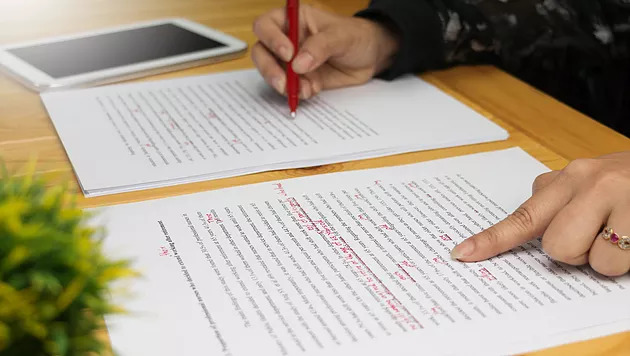A Guide to Australian Tender Terminology

Understanding government procurement terminology is essential for writing competitive bids. Whether you’re new to bidding or looking to sharpen your approach, getting familiar with the language used in tenders can help you navigate the process more confidently and increase your chances of winning.
This guide breaks down the most common terms, offers practical tips for success, and links to helpful resources.
Why Understanding Tender Terminology Matters
Understanding the language of tenders gives your business a clear advantage when bidding for government contracts.
It helps you quickly assess which opportunities are a good fit for your company, ensure compliance with complex requirements, and tailor your proposals to meet client needs. It also enables you to anticipate risks and respond more strategically.
The result? You’re more likely to go after the right tenders—and more likely to win them.
Nine Tender Terms You Need To Know
- Procurement Process
The procurement process is a structured series of steps that a government body follows when purchasing goods, services, or works.
It allows government buyers to assess multiple bids from potential suppliers and select the best value option.
Government procurement is formal and transparent. This ensures public money is spent efficiently and strategically—and that decision-makers are held accountable for how it’s used.
Although the stages in a procurement process can vary, the typical steps include:
- Expression of Interest (EOI): An initial stage where potential suppliers express their interest and demonstrate their capability to deliver the required goods or services.
- Request for Quote (RFQ): Used when the government knows exactly what it needs and is seeking pricing and delivery details from suppliers. This process is typically used for low-complexity, low-value purchases.
- Request for Tender (RFT): A formal and competitive process where shortlisted suppliers submit detailed proposals, including their solution, technical specifications, and pricing. Often used for high-value or high-risk procurements, and may follow an EOI or RFQ.
- Evaluation and Supplier Selection: The government assesses all submissions against defined evaluation criteria to determine the most suitable supplier.
- Contract Negotiation: The government and the selected supplier negotiate final contract terms before an agreement is signed.
The Commonwealth Procurement Rules is a set of rules that guide procurement processes for federal government bodies.
- Annual Procurement Plan
Each Australian government agency publishes its own Annual Procurement Plan (APP)—a document outlining its key planned procurement activities for the financial year.
APPs typically include a strategic procurement outlook statement, which gives a brief overview of the agency’s priorities and focus areas for the year. For Commonwealth agencies, APPs must also list the subject matter of all significant planned procurements, along with an estimated timeframe for when each will go to market.
Businesses can use APPs to identify upcoming tender opportunities and better understand the strategic goals of government buyers in their sector. This insight helps companies align their offerings, plan ahead, and prepare more targeted, competitive bids.
You can find all Commonwealth government APPs on AusTender. This is a centralised platform that publishes all federal government procurement opportunities.
- Expression of Interest (EOI)
An Expression of Interest (EOI) is often the first step in the government procurement process. It allows potential suppliers to signal their interest in a specific project before formal tendering begins. This helps the government gauge market interest and capability.
In response to an EOI, suppliers typically provide information about their organisation, relevant experience, and a high-level outline of how they might approach the project if successful.
The EOI stage enables the government to identify and shortlist suppliers with the appropriate capacity, capability, and experience to deliver the proposed work.
Being shortlisted through an EOI is often a prerequisite for participating in the next stages of the procurement process.
- Mandatory Documentation and Client-Specific Requirements
Both Mandatory Documentation and Client-Specific Requirements refer to documents that must be submitted with a tender. These often include insurance certificates, licenses, compliance forms, and other essential paperwork.
Mandatory Documentation is the standard set of documents required with all tender submissions across government bodies.
Client-Specific Requirements are unique to each government agency and usually relate to particular sectors or projects.
Failure to provide all required documentation can result in disqualification from the tender process.
- Quote
A quote is a formal offer from a supplier that outlines the price and terms for providing goods or services to a government agency.
Suppliers are often required to submit quotes as part of a Request for Quotation (RFQ) or Request for Tender (RFT) process.
Government buyers assess submitted quotes against set evaluation criteria. If a quote is accepted, it typically forms the basis of a contract between the supplier and the government body.
- Evaluation Criteria
Each government procurement has its own set of evaluation criteria. These are the standards and requirements that the government body uses to assess the tenders it receives.
There are standard evaluation criteria that commonly apply to government procurements. These include:
- Operational and Technical Abilities: How capable is the tenderer of delivering the required goods or services effectively and efficiently?
- Financial Capability: Is the tenderer in good enough financial health to deliver on the procurement?
- Value for money: Does the tender provide the best overall value, taking into account all other evaluation criteria?
- Risk assessment: What are the potential risks of engaging the tenderer?
The evaluation criteria for a procurement usually include specific factors. These factors address the unique needs, risks, and complexities of the procurement.
- Terms and Conditions
Every contract awarded through a procurement process is managed according to its specific terms and conditions.
These terms and conditions are the legal rules and business details agreed upon by the government and the supplier. They can include payment terms, delivery timelines, warranties, and penalties for non-compliance.
If any issues arise in relation to the contract, the terms and conditions explain how to handle them.
Terms and conditions may be drawn from pre-existing templates and tailored as needed to fit the contract. This means that the more government contracts you secure, the more familiar you’re likely to become with standard terms and conditions.
- Pre-Qualified Suppliers Panel Arrangement
A Pre-Qualified Suppliers Panel is a list of approved suppliers who meet the criteria to provide specific goods or services under agreed terms and conditions for a set period.
Government bodies can invite these pre-qualified suppliers to submit offers for the goods or services covered by the panel arrangement. Because suppliers are already vetted, there’s no need for a full tender process, which speeds up procurement.
To join a Pre-Qualified Suppliers Panel, suppliers typically submit a formal application. Being on the panel does not guarantee contracts; suppliers must still demonstrate value for money in any engagements they receive through the panel.
Suppliers contracted through the panel can only provide goods or services that fall within the panel’s scope. Any procurement of additional goods or services outside this scope requires a full tender process.
- Preferred Supplier Arrangement
A Preferred Supplier Arrangement is a contract or agreement in which a government body designates certain suppliers as preferred providers. Suppliers are selected based on their ability to deliver cost-effective and efficient goods or services.
Preferred Supplier Arrangements are typically established when a government body needs to procure high-value goods or services, or requires ongoing support over a long term. Inclusion in such an arrangement is competitive—suppliers are evaluated against multiple criteria, including their capability and previous experience delivering the relevant goods or services.
The benefits of being on a Preferred Supplier Arrangement depend on its specific terms. Often, government bodies can purchase directly from preferred suppliers without requiring a new offer each time. However, while preferred suppliers have an advantage for contracts within the arrangement’s scope, being selected for a contract is not guaranteed.
How to Participate in a Procurement Process
Register on AusTender
Gain access to all Commonwealth government tender opportunities through AusTender. Each Australian state and territory also has its own e-tendering portal, which you can find linked on the AusTender website.
Review Annual Procurement Plans
View annual procurement plans for government bodies in your area and stay on top of upcoming opportunities that align with your business capabilities.
Submit Expressions of Interest
Submit to get on government buyers’ radar.
Prepare a Strong Bid
Clearly address the evaluation criteria and include all required documentation.
Understand the Contract Terms
Carefully review the draft contract to ensure you comply with the terms and avoid running into any issues.
Five Tips for Success
Pay attention to detail:
Missing a single mandatory document can disqualify your bid, so make sure you stay on top of all tender requirements.
Understand Pre-Qualified Supplier Panel and Preferred Supplier Arrangements:
Getting onto a Pre-Qualified Supplier Panel or a Preferred Supplier Arrangement can lead to ongoing government work without having to go through a full tender process every time. Get on top of the criteria for selection and look for opportunities to apply.
Seek feedback:
Unsuccessful bids can provide valuable insight into what you can do better next time. If you don’t win a tender, request feedback from the buyer to improve your future submissions.
Leverage your experience:
The more relevant experience you can demonstrate, the more competitive you’ll be. Make sure you highlight your past successful projects and any other experience that shows you’re a good fit.
Master Tender Terminology to Improve Your Chances of Winning
Understanding key terms used in Australian government tenders helps you identify the opportunities that best fit your company and tailor your bids to meet the buyer’s needs. This significantly improves your chances of winning. Familiarity with the Commonwealth Procurement Rules also gives you a clearer picture of what to expect in Commonwealth government procurement processes.
Registering on AusTender is an effective way to stay informed about upcoming tender opportunities suited to your business. Registered users can opt to receive email notifications for relevant opportunities.
You can find more resources and tips for suppliers on selling to the Australian government here.


